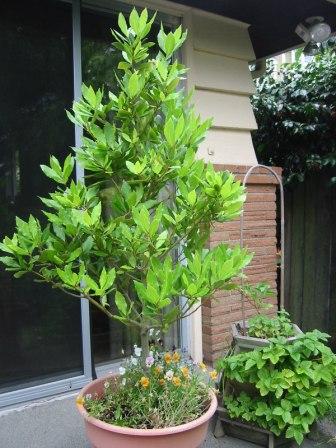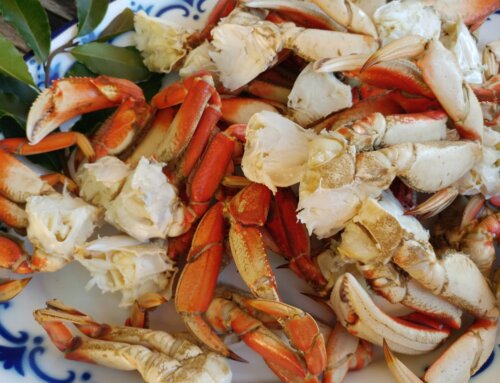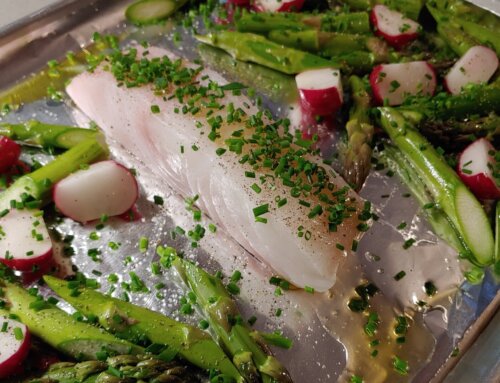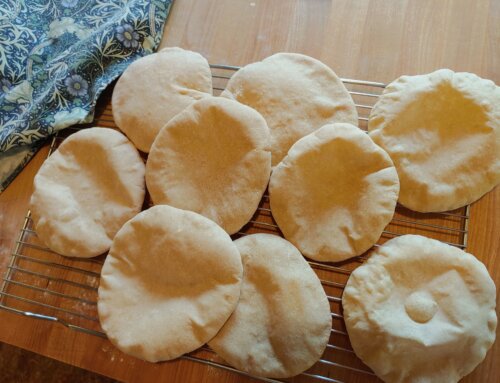Fresh herbs are the norm in so many recipes today, a very happy change from those days when all our herbs were from little tin cans in the kitchen cupboard. That comes thanks both to the availability of fresh herb bundles in grocery stores and more of us home cooks growing chives, thyme and rosemary in our windowsills or patio containers. But one herb seems still relegated to the dry state: the bay leaf. It’s not an herb I’ve ever seen in fresh bundles at the store, and at farmers markets only occasionally, usually then as a nursery plant for the garden.
But I haven’t had to shop for bay leaves for a number of years. Not since I got myself a little start in a 4-inch pot a decade or so ago. Now the plant’s a few feet tall and keeps me in fresh bay leaves year round.
When cooking simple steamed rice, I’ll toss in a bay leaf (torn in a few spots to help release the aromatic flavor) into the boiling water with the rice for a distinct boost in flavor. Added to any stew or soup, you’ll gain a more pronounced flavor with notes of spice, using fresh bay rather than dried. And no chicken goes into the oven around here without a couple bay leaves nestled underneath, a couple more tossed in the cavity.
By far one of the most interesting uses I know of for fresh bay leaves is this surprising dessert: bay leaf crème brûlée. This recipe was sent to me by chef Jerry Traunfeld for my very first cookbook, The Northwest Best Places Cookbook, which came out in 1996. Jerry was the longtime chef at the celebrated Herbfarm restaurant, which then was still in its original, more rustic location in Fall City east of Seattle. In fact, it’s because of that recipe (and the testing I needed to do) that I bought that little bay plant at the Herbfarm’s retail herb shop (which they no longer have at their newer Woodinville location).
Jerry’s hard at work putting finishing touches on his new restaurant, Poppy, which is due to open in Seattle’s Capitol Hill neighborhood in September. The web site shows some work-in-progress photos. He tells me that the bay plant he put in his home garden about 10 years ago is now 20 feet tall and nearly taking over. And for an herb garden at his new restaurant, he just bought a new cultivar of bay, one with interesting wavy leaves.
If I can keep a bay plant alive for a dozen-plus years, anyone can. It sits on my patio in that pot year-round, no special treatment, no specific regimen of care. Once you start cooking with fresh bay, you won’t ever want to go back.
Bay Leaf Crème Brûlée (courtesy of Jerry Traunfeld)
2 cups whole milk
2 cups whipping cream
12 fresh bay leaves
1/2 vanilla bean, split, or 1 teaspoon pure vanilla extract
3 whole eggs
5 egg yolks
3/4 cup granulated sugar
Pinch salt
1/2 cup superfine sugar*
Bring the milk and cream to a boil in a medium saucepan over medium heat. Coarsely tear the fresh bay leaves and add them to the mixture along with the vanilla bean, if using. Remove the pan from the heat and let steep for 1 hour.
Preheat the oven to 325 degrees F.
Beat the eggs, egg yolks, granulated sugar, vanilla extract (if using), and salt in a large bowl. Whisk in the steeped milk mixture until well blended. Strain the mixture through a fine sieve, discarding the bay leaves and vanilla bean. Pour the custard into eight 3/4-cup ramekins and set them in a shallow pan filled with 1 inch of hot water. Bake the custards until just set but still slightly jiggly, about 40 minutes. Let cool, then chill the custards for several hours or overnight.
Just before serving, sprinkle the surface of each custard with the superfine sugar, pouring off any excess. Using a small blow torch, caramelize the sugar just until nicely browned. Serve immediately.
Makes 8 servings
* Superfine sugar will melt and caramelize more evenly than regular granulated sugar, but you can use the latter if you wish.
from The Northwest Best Places Cookbook, Sasquatch Books, 1996





Fresh bay leaves are great as a cocktail garnish as well. Native American Indians would use them to keep the bugs away. What a wonderful plant – thanks for highlighting it!
Please advise where you can purchase a fresh bay leaf plant. I am able to find any website. Are they available is nurseries.
I have seen bay plant at the Whole Foods store. They also sell fresh bay leaf in produce section.
Barbara, I have seen fresh bay plants at many nurseries, though it is a bit of a “specialty” herb so may not be at all shops where fresh herb plants are sold. You may want to call an independant nursery in your area; if they don’t carry bay plants they may be able to order one for you or direct you to another source.
[…] har jag aldrig använt men jag har smÃ¥sökt lite pÃ¥ nätet, bland annat hittade jag en crème brûlée med färska lagerblad som lät spännande. Är det nÃ¥gon som har erfarenhet av färska lagerblad och vill dela ned […]
hi I’ve got what i think is quite a big bay tree in my back garden (8 x 5 x 10 foot), does any one here no where i can sell some of the leaves? or any one want to buy some? 🙂
[…] has a great photo of her bay tree and write up on growing and using fresh bay. – […]